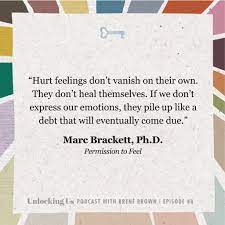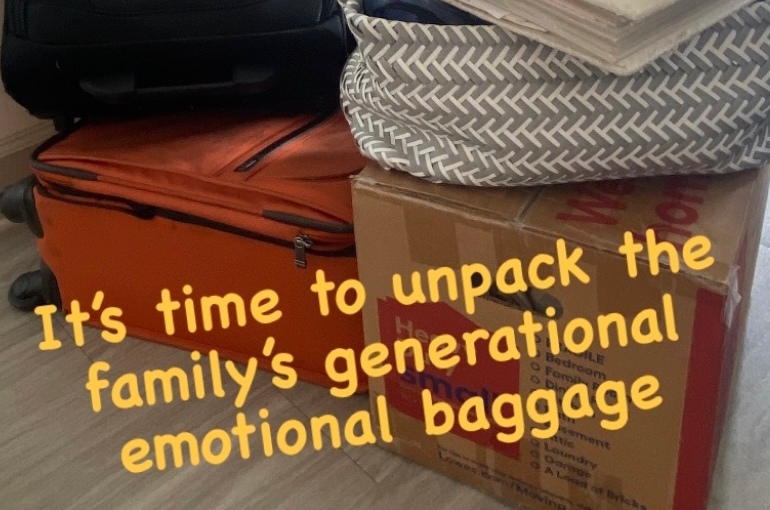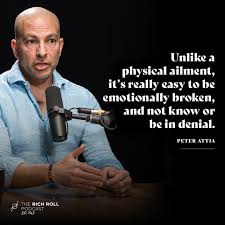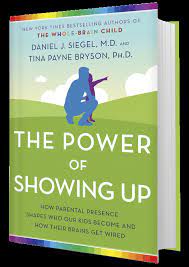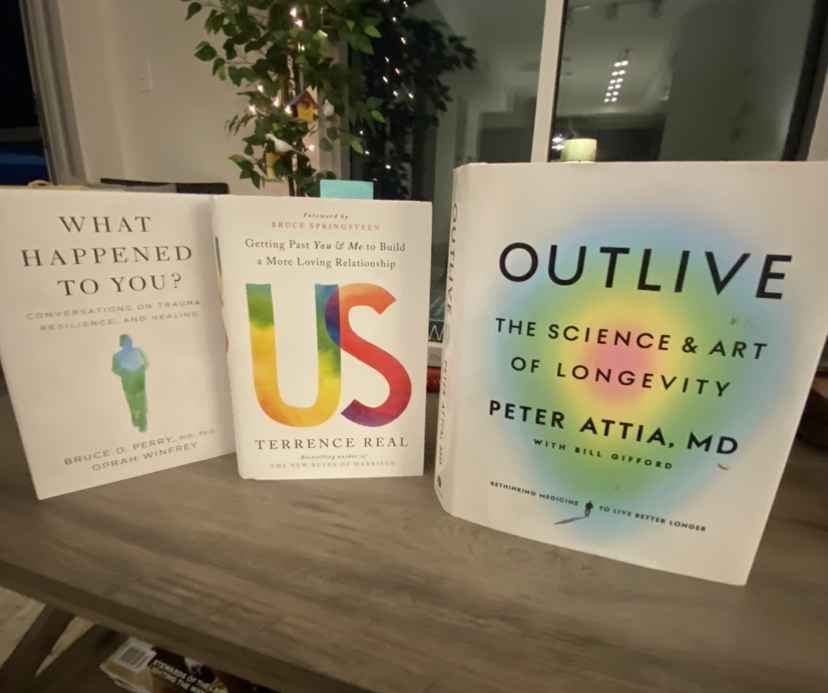Welcome back to my latest blog post series about the change-makers who are helping us take the next meaningful steps in the integration of emotional health into our lifestyles. In the first part of this series, I shared two dynamic change-makers for parenting and for couples. The common thread for both Dr. Becky Kennedy’s parenting model and Terry Real’s relational therapy is what we learned and experienced in childhood that impacts us still today.
Unfortunately a lot of what carries over from childhood into adulthood regarding our emotional health is often not so obvious to us. When we get emotionally triggered or over-stressed, we unconsciously react with patterns we have memorized for decades. We know them by heart.
This is the second post in this series pulls that common thread of childhood, inviting us to go back and revisit how we came to shape our world view but with an entirely different lens this time. Now we are archeologists, searching for the clues and examining artifacts.
A common metaphor that is being used to today across the spectrum of emotional health and personal growth is one of a map. This helpful metaphor tells us that we need to know our backstory and childhood history to clean out and update our beliefs and behaviors. This is the role of an emotional archeologist.
We are going to discover things that are still getting in our way when we retrace our steps. Let’s start by tossing out the chunky picture book with baby faces that express only happy, sad or mad. Most of the life mapping we did back then was based on a very limited emotional vocabulary. It’s nearly impossible to create a more nuanced map to navigate the complexities of real life with only three basic emotions. Yet that is what we did — and that is what we operate on unconsciously even decades later.
When Brene Brown introduced her book, Atlas of the Heart, in November 2021, she gave us a major upgrade to the chunky emotions picture book. She gave us language, definitions and real life examples of our emotions. She called it an atlas.
“I want this book to be an atlas for all of us, because I believe that with an adventurous heart and the right map, we can travel anywhere and never losing ourselves.” — Brene Brown
It was the first time for many of us to have an emotions reference guide; an atlas that helps us understand just how much our emotions are impacting how we navigate through life. Brene’s research supported the fact that most adults were still using only three basic emotions to express themselves – the same three that little kids use every day. Her extensive research was a reality check for how we’d gotten stuck and hampered in our adult lives with such a limited emotional vocabulary.
Brene not only offered us definitions for 87 common emotions and experienced, she provided common, real life examples of when these emotions were likely to show up. Brene’s book upgraded our emotional vocabulary from three core emotions — angry, sad and happy – to a much richer, contextual and expansive way to understand ourselves.
A bonus is that when we understand ourselves better, we become more skillful at understanding others – even (and especially) our own children.
The truth is that as we get to know our own emotions and experiences more clearly, the better we can show up in our relationships with more empathy and curiosity about how others are feeling. Rather than getting lost in each other’s emotions, we can become skillful travelers together.
In my last blog post, I highlighted the parenting movement that Dr. Becky Kennedy is championing. If you are a parent who follows Dr. Becky, you no doubt feel so seen and heard when you watch her videos. With a dollop of reality and a dash of humor, she skillfully shows us how we get hijacked by our kids’s behaviors and can quickly come down to their level with our own reactions and behaviors. Can we catch ourselves in the act of returning to child-sized tools for big emotions and scary experiences? Can we pivot and choose wisely to deploy more mature skills?
“Underneath bad behavior is always a good kid.” – Dr. Becky Kennedy, Founder of Good Inside
Underneath our own outgrown behaviors is that little kid we once were. What we learned and mapped out in childhood is what we need to investigate.
Let’s meet two more change-makers who did their own extensive emotional inner work — and then looked around and asked themselves how they could help others. They poured their hearts and energy into their respective fields and the creation of new approaches for becoming emotions archeologists. Then they took their work one step further. They are teaching us how to integrate our emotions and positively impact how we navigate life and map a better future.
These change-makers are paving the way to a major pivot in mental and emotional health: An ounce of prevention really is worth a pound of cure.
BACK-MAPPING: DR. RICHARD SCHWARTZ, creator of Internal Family Systems
We now know that we do need to go back and look at our childhood to “back-map” why we react without thinking when we are emotionally charged. What happened in our childhood that contributed to our coping skills, unconscious behavioral patterns, emotional triggers and beliefs about ourselves?
In a recent blog post, I shared that Dr. Dan Siegel, author of of Whole Brain Child, acknowledged that many people do not want to revisit their childhood experiences. There is a fear that revisiting old painful memories will take over our current lives and we’d rather not go there. But the truth of the matter is that unconsciously these things we keep stuffed down or locked up are literally showing up in our lives anyway. It’s not the monsters under the bed or the secrets in the closet that are the problem, it is the reality that they are taking up a lot of storage space — and they creep into our minds and behaviors unconsciously.
Meet Dr. Richard Schwartz, creator of a revolutionary form of therapy known as Internal Family Systems. He also uses the concept of a map to help us understand how all the parts of us show up when we are making our way in life.
If you are not familiar with the term Internal Family Systems, you may think that it is a discipline or field devoted to our family trees – which are often full of generational patterns, inherited traits and all kinds of dysfunction.
However, Internal Family Systems is actually a very useful evidence-based psychotherapy developed by Dr. Richard Schwarz in the 1980’s. In plain language, Internal Family Systems is all about us – the me, myself and I.
It is our unique, individual, inner family system comprised of all our sub-personalities. Each and everyone of our sub-personalities has its own viewpoint, qualities and roles it plays in our daily lives.
Before you shrug your shoulders and dismiss that IFS could be beneficial for you and all those you love, stop to think just how familiar you are with a few of your sub-personalities. How well do you know your Inner Critic? Do you have a steamroller in your personality that likes to run over any constructive feedback you might be offered? Are you a people pleaser who often gives to the point of exhaustion? Do you have a fierce warrior side of you — the big protector who prefers a fiery battle over calm conflict resolution? Do you have a stealth, hyper vigilant, guard who stands watch night and day to keep you safe?
If you’ve ever felt an internal tug of war, it’s quite likely one of your sub-personalities was engaged in a struggle. I’m guessing you may be now feeling a little more curious about Internal Family Systems.

In his book, No Bad Parts; Healing Trauma and Restoring Wholeness with the Internal Family Systems Model, Dr. Richard Schwartz does not refer to our sub-personalities as “demons” as this pillow suggests, but rather a much more appropriate, relatable term — they are our “burdens.“
If you ever get in your own way, then you can fully grasp how our sub-personalities are often the very cause of our self-inflicted problematic behavioral patterns. They do burden our lives; they make things harder than they have to be.
Dr. Richard Schwartz reflects on the work of childhood attachment theory pioneer, John Bowlby, to help us explore how and why we came to possess such intricate, complex sub-personalities. John Bowlby viewed our “childhood attachment styles” as our “internal working models”.
Many of us grew up with parents who were not emotionally available and often had a lot of problems of their own. The old parenting models punished us for our “bad” emotions, gave accolades for our “good” emotions; or worse yet, encouraged our ability to become cognitively dissonant and just power through our emotions.
As children with pint-sized developing brains and the inability to make sense of a very big, complex, confusing and contradictory world, we developed “maps” of what to expect from our caretakers and the world in general — and from all our subsequent close relationships. These “maps” we created also told us things about our own level of goodness (or lack thereof) and how much we deserve love and support (or how we weren’t worthy).
These individual “maps” get lodged in our bodies of our young parts and become very powerful – and unconscious – organizers of our lives. These are our personal burdens.
As if that isn’t even to contend with as we mature, we also carry internally another class of burdens — legacy burdens. These do not come from our direct life experiences, but we inherit them from our parents. Legacy burdens are the generational patterns, beliefs, and attitudes that get passed along rather organically. They too are very potent organizers of our lives. Think of all the societal conditioning, cultural beliefs and attitudes that are baked into our lives from birth. As Dr. Schwartz articulates “because we have absorbed these legacy burdens in our daily environments, we have marinated in them for a very long time; so it’s often harder to notice them. In this way, legacy burdens can be as prominent and unnoticed as water to a fish.”
Legacy burdens often show up as biases and prejudices that we may not be consciously aware that we possess. Intellectually we believe one thing, but instinctually and unconsciously we can act and feel quite differently when we are emotionally charged. High stress situations take our executive functions offline – and suddenly we are acting on the “baked in” legacy burdens, not from our current values.
Dr. Richard Schwartz invites us to become very fluent and familiar with our sub-personalities. Where we once believed it was better to use willpower to fight or resist them, he turns this theory inside out. One of the most transformational ways to really get to know ourselves well, and to do our our “inner work”, is to get up close and personal with our inner cast of characters, our sub-personalities. This is our very own “internal family system.”
We’ve often referred to personal growth work as peeling off the layers our onion, but Dr. Schwartz tells us that our sub-personalities are more like cloves of garlic. Each part is like a garlic head with individual cloves. The individual cloves developed from an event or experience, how we made sense of it, what we came to expect on a regular basis, and how we mapped it out. These parts have “blended” themselves to our perspectives, emotions, beliefs and impulses.
Our emotions, bodily sensations, thoughts, impulses, knee jerk reactions, limiting beliefs — they all are emanating from our internal parts. Dr. Schwartz refers to all of these as “trailheads“. He offers that when we focus on one, it is as if we are starting out on a trail that leads us to the part of us from which those feelings, reactions, impulses emanate.
What happens on this trail when we lean in with curiosity and a strong desire to learn our inner terrain? We open up to discovery about the parts of ourselves and our stories that have much wisdom to impart to us. And we often learn that all that messaging we got as children is not at all who we really are, who we have become and especially how we can continue to evolve into the best version of ourselves.
Can you picture yourself as a small child on that trail many decades ago? How different would the landscape look to you and how scary would it be to navigate it with limited resources all while fighting back tears and an onslaught of big emotions? Would you want to use the map that child created to help you navigate the trailhead today? Of course not. Today you have so much more knowledge, self awareness, agency and resources at your disposal.
Take a moment to think about grown adults that are still having meltdowns and explosive temper tantrums. Reflect on the emotional triggers you can spot in yourself and others that seem like a huge overreaction to current events. Do you see childish bullying tactics showing up with adults who frankly should know better?

With the Internal Family Systems model, Dr. Schwartz reframes our sub-personalities as our “parts”; as if each part were a person with a true purpose. Our inner “parts” are doing a lot of important jobs to help us get through life and be in relationships with others. The problem is not us — the problem is that our “parts” keep us stuck in the past.
The parts of us that throw temper tantrums are loudly announcing “please pay attention to my needs right now”. The parts of us that want to “numb out” are simply assuming the role of “pain reliever”. Very often it is deep emotional pain that causes the parts of us to step in as a protector (albeit one that now causes us more trouble than relief). The inner parts of us are the ones pulling our emotional triggers.
If you have ever been a sibling who tried to protect younger siblings from a parent’s unchecked anger, then you have a very clear, real-life example of the role that your “parts” are playing for you. Dr. Schwartz helps us understand that when we change our perspective on our parts and the roles they play, we can “unburden” those parts of us from outgrown, outsized fear and responsibility.
The Internal family systems model has become a big transformational pivot for how therapists and psychiatrists are treating trauma, addictions, depression and anxiety. It is similarly a meaningful pivot for individual and couples counseling and it is vastly improving our approach to parenting. We are shifting away from stigmatizing these issues, from blaming and shaming, and relying solely on abstinence or will power to solve the problem.
When we do this inner work and look at our “parts” and how they show up in our adult lives, what we discover with much clarity is how our own kids are doing the very same thing today. If your child or grandchild blurts out that they are “stupid or bad”, “too much trouble” or “not smart enough”, they are blending their behavior with their identity– they are creating their inner garlic clove.
Once we begin to explore our own childhood maps, we gain a lot of insight into what might be happening in our own children’s self identity. We can readily see when our children might be taking their behaviors – and our reactions to them – as labels for who they are. We can help them course correct in real time. Yes, an ounce of prevention will most definitely be worth a pound of cure.
Rather than waiting for these emotional and mental health issues to crop up and create big problems in our lives and relationships, we can become proactive in our emotional health lifestyle. The groundwork for this improved foundation for a long and meaningful life has been laid by Brene Brown’s two decades of research on shame and vulnerability, Kristin Neff’s work on self compassion and Dr. Carol Deck’s work on mindsets. It integrates seamlessly with all the research, studies and improved methodologies by Dr. Richard Schwartz, Bessel Van Der Kolk, Gabor Mate, Dr. Dan Siegel and Dr. Bruce Perry (just to name a few).
Counseling, therapy and life coaching are all changing in very beneficial ways due to breakthroughs in neuroscience, psychology and behavioral science. We are collectively moving to “prevention” rather than treating problems after the fact.
Dr. Schwartz’s book – No Bad Parts – and Dr. Becky Kennedy’s insights that we have good kids with problematic behaviors dovetail in a very impactful way. We can teach our kids an expanded emotional vocabulary, integrate their honest emotions with their experiences in healthy ways, and teach them invaluable emotional regulation skills.
Now let’s turn to a pioneer of this new emotion revolution – a man whose childhood life story became fuel for his passion to teach us all how to integrate our emotions to guide us rather than stunt our growth.
EMOTIONAL GPS: Marc Brackett, Ph.D, – Author of Permission to Feel and Director of the Yale Center for Emotional Intelligence
Dr. Marc Brackett stated the obvious in a recent online workshop based on his book, Permission to Feel: Emotion regulation is taught and modeled. Emotion regulation is goal oriented – it helps us achieve our goal in healthy ways, not adaptive ways. We cannot teach our kids what we ourselves do not know.
During this workshop, Dr. Brackett shared powerpoint slides of his global research that revealed that most adults offer that they were never taught emotional regulation at home or in school. This is not at all surprising evidence. We now know that old parenting models did not integrate emotions into our developing brains. We also know that the complexity of our personal burdens and our legacy burdens made our navigation of life harder than it needed to be.
Dr. Marc Brackett knows this intimately — and it was his own childhood experiences that set him on the path to change what we got wrong.
I first learned of Dr. Marc Brackett’s work on an Unlocking Us podcast with Brene Brown during the COVID pandemic. He had released his book, Permission to Feel in September, 2019. When the pandemic left us collectively struggling with ongoing uncertainty and big mood swings, Brene knew the time was right to talk about the many emotions we were all feeling. This podcast aired in April 2020 and the conversation was relatable and relevant. We were like sponges ready to absorb what we were hearing.
Marc brought a strong sense of humor to the challenging topic of emotions and shared with Brene that he often got a lot of pushback when he’d present his research to academia or school administrators. Emotions were thought of as the messy, sticky problems — certainly not solutions to behavioral issues.
But Marc had a compelling portal to break new ground on a brand new trail in the field of emotional intelligence. It was his life story. He told it – and those who once resisted – began to see how all the dots connected.
Marc’s personal childhood story is one that is sadly quite familiar; it will open your heart as you learn about the dysfunction, abuse and trauma he experienced as a young boy. He articulates so poignantly his troublesome outward behaviors and the dark inner secrets that caused him to be so out of control, angry and despondent.
Marc’s young life was full of inner struggle no one could see from the outside. Unprocessed emotions, dark secrets pushed down and his inner parts doing their best to protect him were the root cause of the outward unruly and difficult behaviors. Until his beloved Uncle Marvin showed up in his life in a profound way.
Marc’s Uncle Marvin gave him “permission to feel”. With Uncle Marvin as his emotional mentor, Marc was able to “unburden” himself by telling his story of abuse to his trusted uncle, without being shamed or blamed. He was believed. He was seen, valued, heard and deeply cared for by Uncle Marvin.
It is hard to hear Marc’s personal story and not find multiple points of connection. Any fellow academic or school administrator could see parts of their own stories embedded in his. They could easily overlay his story onto students, peers, and their own family members. Suddenly emotions were clearly not the problem and neither was problematic behavior. They were symptoms and warning signs for what happened in a child’s life.
Now he had their attention — and their buy-in — to support his work and most importantly, his outreach to educate others.
We need emotional scientists….not emotional judges. We also need emotion mentors.
We need to have people who will listen to understand and who will support us in getting the help we need when our “parts” and our behaviors are evidence that something needs to be addressed. These people are usually the ones who have done their own inner work. They have deep wells of empathy and compassion. They build trust and meaningful connection. They are a safe place to land.
Marc has spent more than 25 years researching and writing about emotions and talking to people all over the world about their feelings. He is an impassioned change-maker who knows firsthand the scars of childhood trauma, the importance of being able to express, feel, and process emotions as they are unfolding.
He knows that we cannot teach what we ourselves do not know.
We wouldn’t send our kids out on a hike without a buddy, gear, a trail map and a water bottle. Yet we often send our kids out into the world totally unprepared to navigate their emotions and those of others.
Dr. Marc Brackett is the Director of the Yale Center for Emotional Intelligence and he developed the RULER program that is being taught in classrooms and workplaces all around the globe. RULER is an evidence-based approach to social and emotional learning which teaches adults and students the value of our emotions and building the skills of emotional intelligence.
Yet another seismic shift and it is happening at school. Rather than focusing solely on problematic behaviors, adminstrators and teachers are being taught to become emotion scientists. What is the root cause of these uncontrolled behavioral outbursts? The RULER program starts by teaching adults what they need to learn. Then they take those new practices and understandings and teach them to children.
RULER is an acronym for this skills-based scientific approach:
R – Recognizing Emotion
U – Understanding Emotion
L – Labeling Emotion
E – Expressing Emotion
R – Regulating Emotion
Dr. Bruce Perry and Oprah Winfrey co-authored their book What Happened to You; Conversations on Trauma, Resilience and Healing in April, 2021. This insightful book opened us to learning the backstory of people, of gaining context and deeper understanding about childhood experiences that left scar tissue on how we view and navigate life. Dr. Brackett’s work takes a microphone to this collective human issue — he is using his incredible platform to advocate for “permission to feel”.
Rather than judging kids or their emotions, he is urging us to recognize that our emotions are chock full of valuable information about what is occurring in a child’s life and how they are mapping it. Children are not able to use their executive brain function to do this work, which is why we adults need to be their training wheels. Their brains are developing — slowly — but life experiences and big adult emotions are coming at them hard and fast. We need to become emotion scientists, not emotional judges. We need to be their training wheels to learn about emotions and how to use them effectively.
Recently Marc launched the Permission to Feel online book club as yet another avenue to educate people globally about emotional integration and regulation. It is a grassroots effort to foster the needed conversation about our emotional health. It feels like a support group for emotional integration as people share their past experiences and offer how they are learning and applying the RULER approach to their own lives, to parenting and in their relationships.

Marc and his team also unveiled an engaging new app to help us expand our emotional awareness and vocabulary — How We Feel. This colorful app is free, easy to use and contains 144 emotions! It’s designed to help us “check in” periodically throughout our day to see how we are feeling and to offer helpful tips and tools if we need some emotional support. This app can help us spot some of our “go to” emotional reactions and patterns.
Dr. Marc Brackett’s personal life story is a trailhead. It led him to discover how childhood shapes us, the importance of teaching and role-modeling emotional intelligence and regulation, and the invaluable scaffolding we can provide to others when we become skillful emotional mentors.
TRAILHEADS AND UPGRADED GPS:
Brene Brown gave us an atlas – the reference guide we sorely needed to begin our emotions excavation work. Dr. Richard Schwartz gave us a whole new way to view our childhood experiences and emotions, without judgement and shame; without feeling like we have to wrestle with our emotions and blame them for our woes. His more positive approach encourages us to look at our own trailheads, investigating the roles our parts have played in the past and letting go of what no longer serves us well. He invites us to step into our mature agency and chose emotional regulation to help us navigate our lives more skillfully and successfully.
Dr. Marc Brackett gives us “permission to feel” and encourages us to become emotional scientists with ourselves and others. Drop the judgment and lean into curiosity. When we get comfortable and more agile with this new approach to our emotional landscape, we can become trail guides for our children and others. We can become emotions mentors.
SNEAK PREVIEW:
In the upcoming 3rd part of the blog post series on change-makers, you’ll be meeting Dr. Andrew Huberman, Dr. Paul Conti and our Surgeon General, Dr. Vivek Murthy. Many of us are learning about our emotional and mental health from podcasts these days. I’ll do my best to distill and curate some of the most salient content that is having big impacts in our overall wellbeing. Not suprisingly, the turning point is “prevention”. We are no longer going to wait to treat problems when they occur; we are pivoting to preventing them as much as possible.
RECOMMENDED RESOURCES:
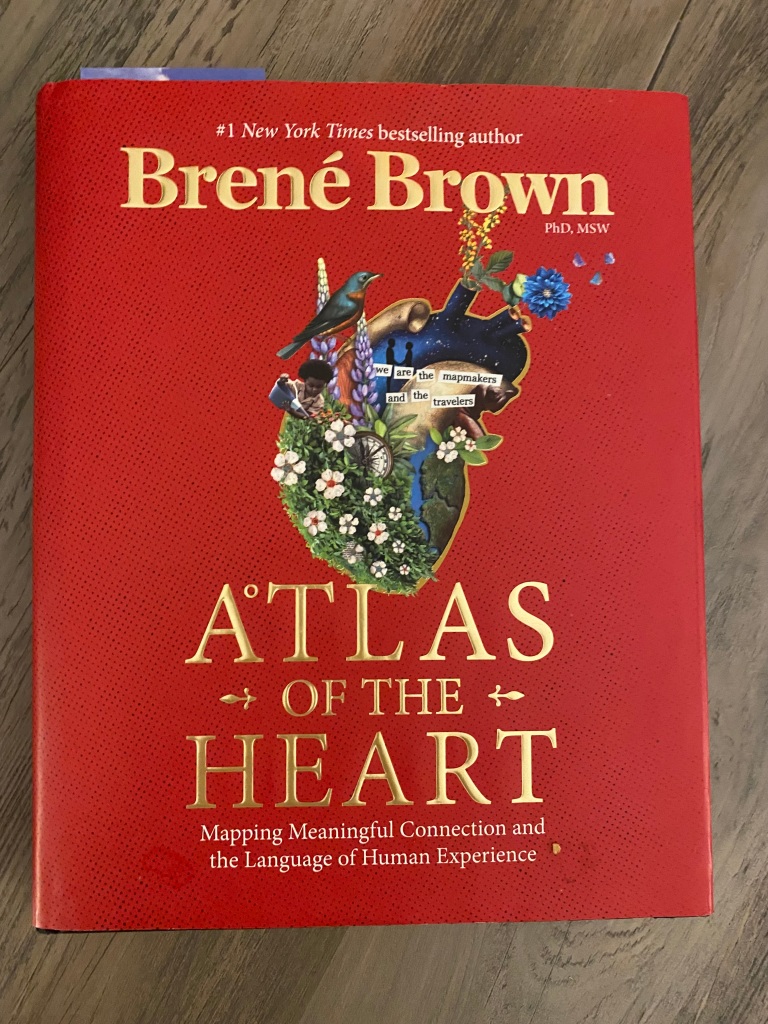
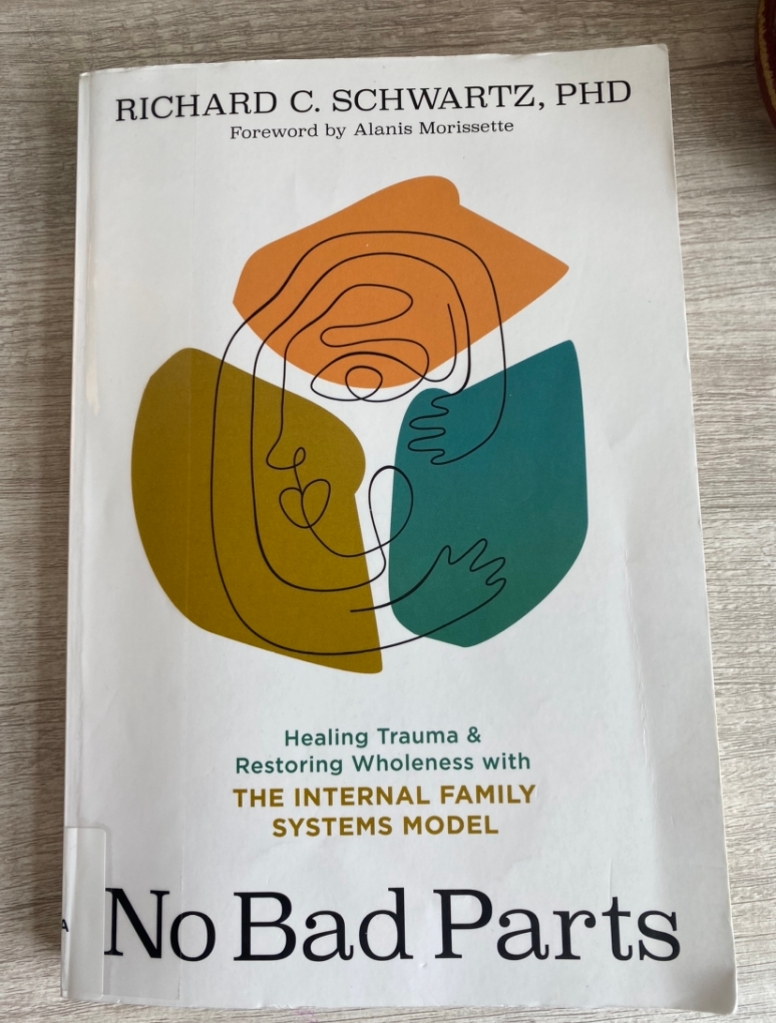
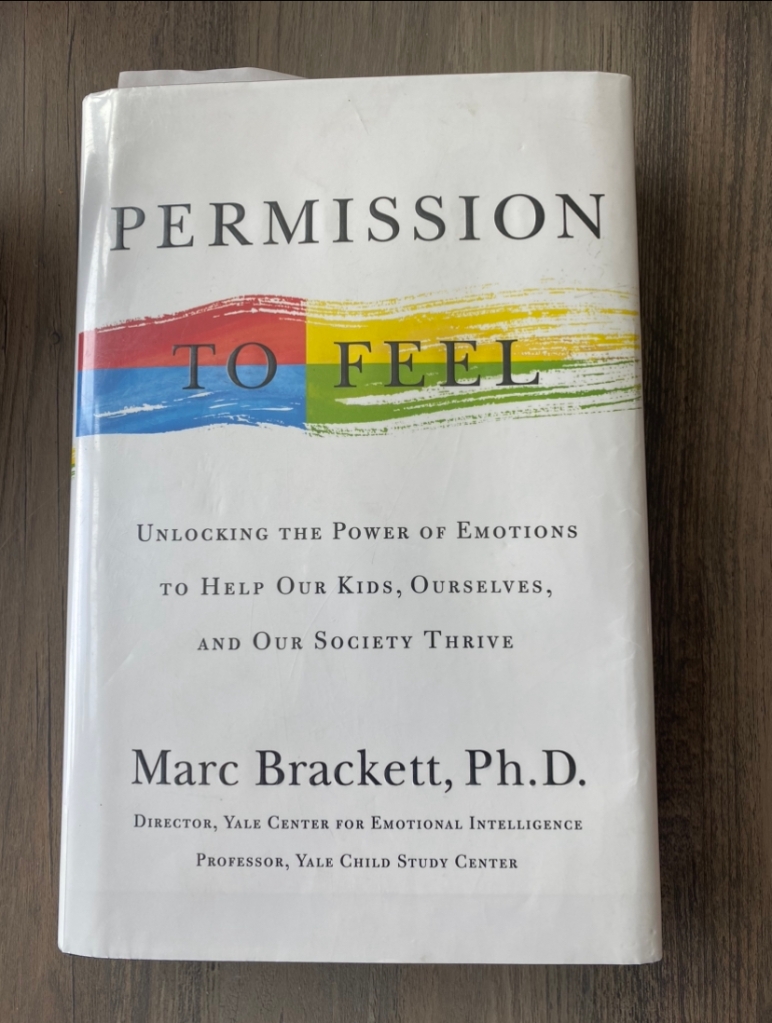
Here are links to the websites for Internal Family Systems and the RULER Program:
Internal Family Systems:
https://ifs-institute.com/about-us/richard-c-schwartz-phd
Yale School of Medicine -RULER program:
